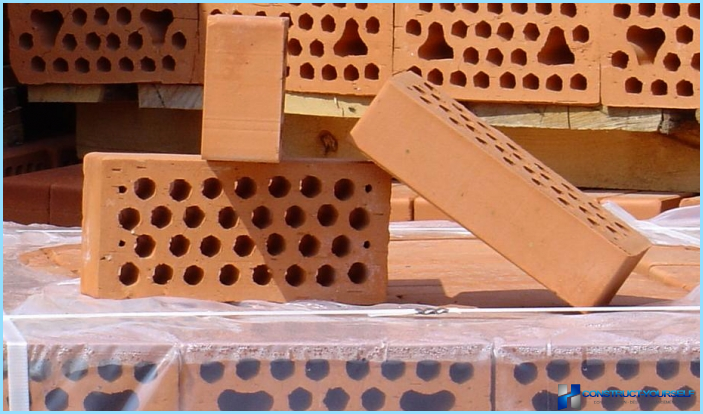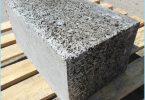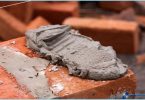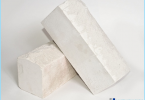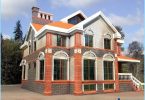Today one of the most common materials used for masonry, can be safely called a ceramic brick. Material for its manufacture is clay, and thanks to various additives, the brick takes on different properties. Its popularity among the materials used for the masonry, ceramic brick owes its strength, frost resistance, water resistance and good thermal conductivity. In this article you will learn about the main characteristics, features and types of this construction material.
The composition of ceramic bricks ↑
Ceramic good quality bricks are made from clay fines. Raw materials for production are mined using shovel, which does not mix with clay layers. Such pits, unfortunately, left a bit. Bucket wheel excavators clay mix, so for the manufacture of high-quality ceramic bricks from this material must be carefully maintained firing.
In essence clay is a mixture of elements, some of which melt well, and others not. During a proper firing of fusible elements bind and dissolve those which melt worse. Proportions affect the structural composition of ceramic bricks. Classic technology aimed at manufacturing high strength and to preserve its correct shape. Characteristics of ceramic bricks are regulated by GOST 530 2012.
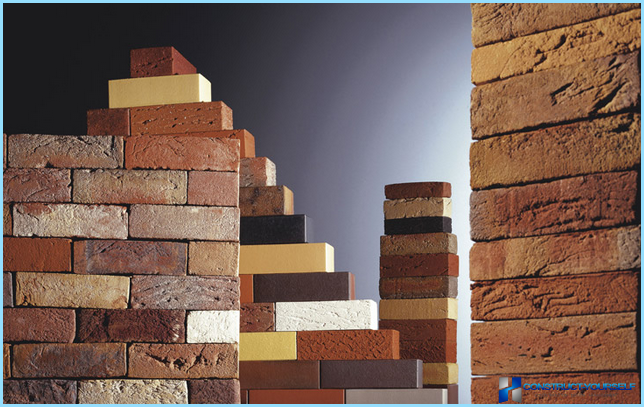
Specifications ↑
Ceramic brick has a long list of different technical characteristics. These include frost resistance, thermal conductivity, strength, water absorption, porosity and density. It is necessary to consider each separately:
- Frost is the ability of a material to tolerate freezing without damage and thawing in water. That is, the material undergoes a kind of cycle. The more cycles can sustain the item, the higher its quality.
- The thermal conductivity depends on the porosity of the product. In fact, thermal conductivity is heat transfer when there is strong contrast of temperatures inside the building and outside.
- Strength depends on how well the material can resist strong mechanical stress, which cries out voltage.
- The rate of water absorption depends on how the material absorbs and retains moisture. High moisture content reduces the technical specifications. From solid ceramic brick, GOST, saturation moisture should not exceed 8%, and the core 6%.
- Porosity a term that describes how full body vitrified brick. It depends on the strength, frost resistance and a few other aspects. To a building material was more porous with addition of coal, peat, or fine straw. During the firing they burn out and leave voids.
- Density material can range from 2100 kg/m³ up to 1000 kg/m³. It all depends on the manufacturing technology and type.
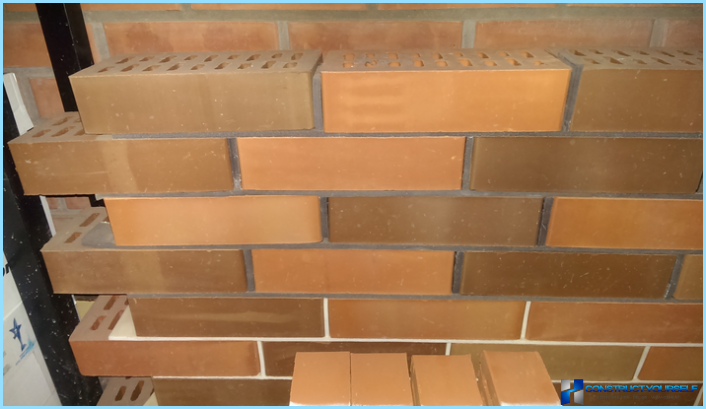
The types of ceramic brick ↑
This building material has several types. The differences depend on raw materials, method of manufacture, the quality of the front side, as well as porosity. Thus, the ceramic brick is divided into ordinary type and facing.
Soldier bricks ↑
Ordinary ceramic brick or as it is simply called «construction» divided into 2 types:
- core;
- full-bodied.
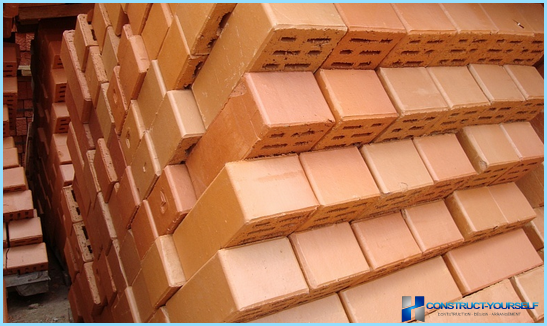
The percentage of voids in the solid material cannot exceed 13%. It is used in the construction of structures that have an additional burden, in addition to its own weight. For example, such load-bearing elements, such as exterior walls, pillars, columns. The material for such purposes should be durable. For buildings with a heavy load is applied the material grades M250 and M300. For full-bodied ceramic bricks characterized by a strong heat transfer, which is a disadvantage in the construction of residential buildings. Therefore, when building a house, consider additional insulation.
Hollow ceramic brick is widely used for the construction of walls in low-rise buildings that do not carry much of the load. It is also used to fill the frame and construction of partitions in apartment buildings. Voids in the material can be positioned vertically, but can horizontally. The shape of the cavities may also vary from the classic square to oval.
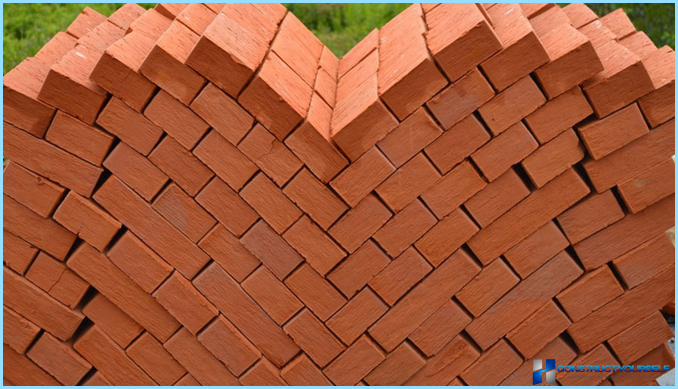
Facing view ↑
This type is sometimes called a facade. Its purpose is to facing of buildings. A very important appearance. Form must be precise, color is the same, but the surface must be free of cracks and delamination. Most often a brick veneer to make hollow. It has good frost resistance and thermal properties.
Facade or face ceramic brick is most often used for lining. The main application of this type – facing of buildings. It must be extremely important to have a neat and attractive appearance – smooth and nice color, no delamination or chipping on the surface, the exact shape and perfect face. Basically, facing ceramic brick is hollow, so it is characterized by high heat transfer characteristics and frost resistance.
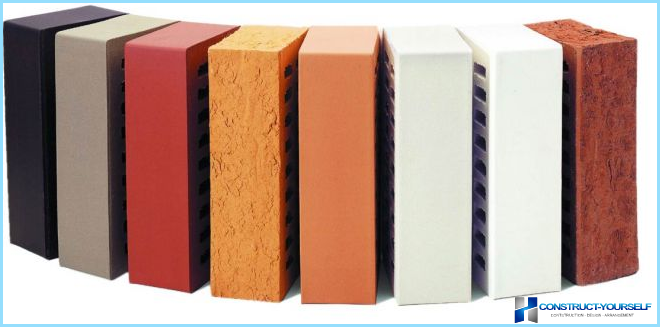
On the market you can find several types of bricks:
- ordinary;
- glazed;
- with the texture;
- with engobe;
- figure.
Ordinary brick for the cladding has a smooth surface, which gives the required color. The surface color depends on the composition of raw materials, firing temperature and time. So the building will retain a beautiful appearance for many years, but the cost is quite high. Even though undemocratic, the price does not prevent the material to be popular.
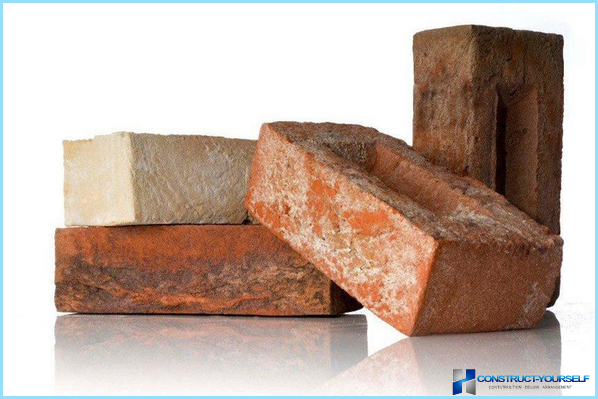
If you think a tactile veneer, it is used brick, some of which have decorative relief. Basically it is a variety of patterns, imitation wooden boards or the effect of aged stone. This type of material is often used for various decorative elements, curved details, arches, columns etc.
Engobe brick is an artificial stone consisting of two layers and having a smooth Matt surface. Engobe, which is the decorative layer is achieved by applying a layer of white clay (painted with special dyes intended) in dried raw.
Glazed products are obtained by coating of fired bricks, handmade. The main element used in making glaze – fusible glass. After re-firing appears glassy coating which will increase the rate of frost.
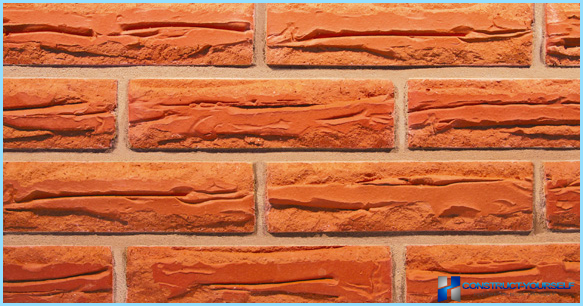
Special material ↑
Sometimes requires the use of artificial stone with special properties that are required for specific purposes or under certain conditions. As example, of ceramic or refractory material.
The main purpose of clinker brick – facing of facades, socles, as it is used as a floor coating on roads, sidewalks and industrial premises. This kind of material characterized by high frost resistance and durability. Such performance is achieved by the fact that the basis of the composition lies refractory clay, the firing of which is performed at a very high temperature, much higher than when firing conventional clay.
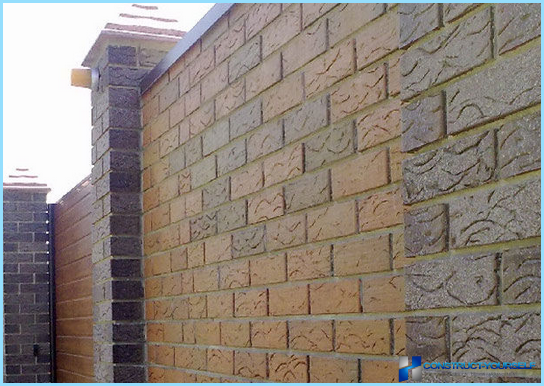
As the price of this material is very high, it use only as necessary, under strict conditions. As for the disadvantages, this material is characterized by a high level of thermal conductivity, which is caused by high density.
If you anticipate contact with fire, it is necessary to use a special material, which is not terrible fire. It is produced from chamotte clay. It is able to withstand temperatures over a thousand degrees Celsius. His form can be different: classic, arched, rectangular or even wedge shaped.
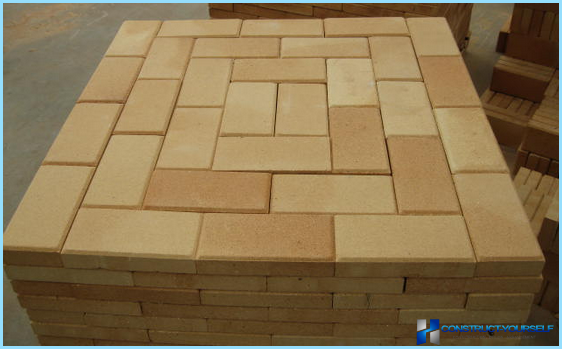
Conclusion ↑
Ceramic brick is a product that is actively used for construction of various buildings in our days. It has lots of advantages and not many disadvantages. It is used for construction of interior partitions or load-bearing structures. Due to the large list of advantages this material helps to solve a difficult architectural task. Sometimes this kind of bricks used for the restoration of historical buildings.
Additionally on how is made of red ceramic bricks, find out in the next video

